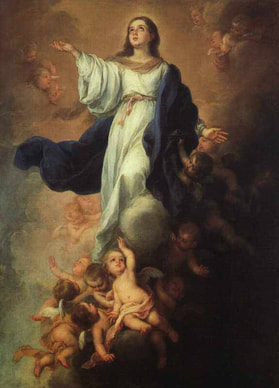 On November 1, 1950, Pope Pius XII issued the Apostolic Constitution Munificentissimus Deus (The Most Bountiful God) which declared “the Immaculate Mother of God, the ever Virgin Mary, having completed the course of her earthly life, was assumed body and soul into heavenly glory.” In doing so, Pope Pius defined for all time that the Assumption is a belief of the Catholic faith (cf. CCC, 966). And though the decree itself is only sixty-four years old, it succinctly shows that the belief spans all the way back to the beginnings of the Christian tradition. But what are the implication of this teaching and its feast day for the everyday faithful? First of all, it further illustrates Mary’s importance not only for Catholics but also for all mankind. This feast is but another way in which the Church honors the vessel that brought the Messiah into the world. It is through Mary that the human race received its savior. Therefore, one can see her Assumption into Heaven as a beautiful gift given to her by God. After living a truly exemplary life of faithfulness and love, God saw fit to bring her body and soul into paradise where, as PopePius puts it, “as Queen, she sits in splendor at the right hand of her Son, the immortal King of the Ages.” The Virgin’s Assumption, however, is also a gift to the faithful.The Holy Father writes, “while the illusory teachings of materialism and the corruption of morals…threaten to extinguish the light of virtue and to ruin the lives of men by exciting discord among them, in this magnificent way all may see clearly to what a lofty goal our bodies and souls are destined.” Mary was the first disciple of Jesus; she was the perfect disciple of Jesus. At the Wedding at Cana, she tells the servers, “Do whatever He tells you.” This is the same kind of trust all the faithful should try and emulate. And, after living a model life, she was gifted with her body and soul being brought up to Heaven. That is exactly the same hope that all Catholics (should) share. The Nicene Creed sums it up quite well: “He will come again in glory to judge the living and the dead and his kingdom will have no end…I look forward to the resurrection of the dead and the life of the world to come.” Catholics believe that at the end of time itself, when Christ comes to “render to each man according to his works, and according to his acceptance or refusal of grace,” all the dead will be resurrected (cf. CCC, 682). Those who enter Heaven will be restored, body and soul, to the gloried beings they were always meant to be before the Fall. Thus, the Assumption of Mary is not just a one-time occurrence, but rather a foretaste of what will happen at the end of days. It was not only a gift to the Blessed Mother, but also a gift to mankind. Humanity received a glimpse into what lies ahead for those who follow the example of a woman who put her whole heart, her whole faith, and her whole being into the care of a man she knew as her son and the Son of God. Victor David is a Collaborator with the Catholic Apostolate Center and is a staff member at The Catholic University of America, his alma mater, in Washington, D.C. He is a member of the Catholic University Knights of Columbus.
0 Comments
Lent is a time of reflecting on how to better ourselves in our relationships with our friends, our family, and our God, as well as a time to reach out to those less fortunate than us and show them the love of Christ. Most people probably do not think of this Lenten journey as a time of joy, but I do, for not only does Lent allow us to refocus ourselves on Christ, but it also calls us to share in the suffering of Christ.
During Lent we hear how Christ’s ministry unfolded and how people came to see him as the Son of God, our Savior and Redeemer. Christ’s journey was not easy. He endured pain and suffering for our sins in order that we might be reborn to new life through the sacrifice of his body and blood. St. Francis of Assisi wrote in “True and Perfect Joy” that the sick could be healed and the whole world could be evangelized, yet true joy comes in a mutual suffering with Christ on the cross. But how can suffering be joyful? Here on earth, in this life, the greatest and most intimate experience with Christ comes from our participation in the Eucharist. However, by also sharing in Christ’s suffering our relationship with him grows even more intimately. Indeed, taking part in Christ’s suffering allows us to more deeply share in the mystical Body of Christ. St. Paul wrote in Colossians 1:24, “Now I rejoice in my sufferings for your sake, and in my flesh I am filling up what is lacking in the afflictions of Christ on behalf of his body, which is the church.” During Lent each of us is called to share in Christ’s suffering in a unique way, whether that be sacrificing our usual daily donut, praying a rosary each day, or taking time to serve meals to the less fortunate. We need to recognize that in these sacrifices we share in some small way in Christ’s suffering, and thus are brought infinitely closer to him. How can this not bring us joy? Since Pope Francis recently released Evangelii Gaudium, “The Joy of the Gospel,” it seems prudent to also reflect on how we are called to live out his concept of joy this Lent. In the introduction of this exhortation, Pope Francis talks about rejoicing in the cross, “The Gospel, radiant with the glory of Christ’s cross, constantly invites us to rejoice” (Evangelii Gaudium, 5). The joy of which Pope Francis speaks, joy coming from the Gospel, is a joy that radiates from our love for Christ and our willingness to serve Him and others. It is through our ability and desire to follow the Lord’s commandments and our attempt to imitate Christ’s relationship with the Father that we are able to share in this joy. There could not be a better message this Lent as we try to refocus our faith and to better ourselves before our Lord! I have challenged myself this Lent to live out these two conceptions of joy each day: sharing in Christ’s suffering and my continued desire to serve Him. It is through each of these that we not only build up our own faith and discipline, but also have the ability to share it with others. We can bring Christ’s joy and peace to His people here on earth. Through this participation in Christ’s mission, we get a small glimpse of Christ’s infinite love for us. Pope Francis says it best as he reminds us of what joy should look like in our lives, “Joy adapts and changes, but it always endures, even as a flicker of light born of our personal certainty that, when everything is said and done, we are infinitely loved” (Evangelii Gaudium, 6). Nicholas Shields is a senior and the Grand Knight of the Knights of Columbus at The Catholic University of America The story of the Blind Bartimaeus is one of the most telling encounters between Jesus, our Savior, and our broken humanity so critically in need of salvation. The truth is we are all Bartimaeus’; we all deeply desire to receive the sight or “insight” only the Lord can provide.. But what is it that we long so much to see? And, what keeps or blinds us from seeing it?
I believe, as experienced in my own life, we all long to see that which all other sight is meant for, the Way. That is to say, we all long to see the way to our healing, our happiness, our security, but most of all we all truly long to see He who is the Way to our salvation. So what keeps us from seeing Him who is the Way, the Truth and the Life (Jn 14:6)? My own sight has often been blinded by the fears and anxieties brought on by the brokenness of my own human condition and triggered by the brokenness of a fallen world, itself so desperately in need of seeing the way of salvation. This anxiety that so many of us struggle with can lead to a type of spiritual blindness with, perhaps, more drastic consequences than any Bartimaeus’ physical blindness had caused. This spiritual blindness is the type that can challenge or even cripple the strongest of faiths. Yet, like many of the paradoxes found in scripture, this blindness can, through the Grace of God, serve to open our senses to what we must hear: the footsteps of the One who approaches. And if, like Bartimaeus, we come to courageously trust our Lord and learn to turn away from the surrounding fear that disables our discernment, what we really come to hear is His voice calling us; giving us our vocation to come and follow him: “On hearing that it was Jesus of Nazareth, he began to cry out and say, "Jesus, son of David, have pity on me." And many rebuked him, telling him to be silent. But he kept calling out all the more, "Son of David, have pity on me." Jesus stopped and said, "Call him." So they called the blind man, saying to him, "Take courage; get up, he is calling you."(Mark 10:47-49) When I hear the story of the blind Bartimaeus I can’t help but reflect on my own encounter with the living Savior, especially as He passes through my mind and heart amid the pangs of a hostile and blinding crowd of anxious emotions. Another particularly telling part of the story is how Bartimaeus, the “son of honor” repeatedly calls out to our Lord the, “Son of David”. King David was a man, much like Bartimaeus, who was destined for honor and dignity. Yet, he was blinded by his own brokenness and crippled by the powerlessness he felt against his own humanity. King David, like Bartimaeus, in Psalm 51 cried out to God with an unwavering confidence in God’s Divine Mercy. My own battle with anxiety has led me to cherish a deep sense of humility. I am not in control, I don’t have all the answers, I often cannot endure on my own, I need others, I need communion, I need Christ. Moreover, we hear the words of the prophet “be not afraid, I am with you” (Isaiah 41:10). And again, we continue to hear the words of St. Paul and all the martyrs who boasted of their weaknesses which won for them the strength of Christ (c.f. Cor. 12:9-10). So let us cry out! With all humility and confidence and faith in the words of another one of Christ’s redeemed…Domine, si vis, potes me mundare! “Lord, if you wish, you can make me clean.” (Mt. 8:2) Bart Zavaletta is a Theology teacher at Skutt Catholic High School in Omaha, NE. "For already at the beginning of their lives they pass on. The end of the present life is for them the beginning of glory. These then, whom Herod's cruelty tore as sucklings from their mothers' bosom, are justly hailed as "infant martyr flowers"; they were the Church's first blossoms, matured by the frost of persecution during the cold winter of unbelief." St. Augustine
Twinkling lights adorn front porches; snowflakes fall softly to the earth; jingle bells sound from every street corner; and children’s voices sing praise in memory of the Savior’s birth as Christmas comes bustling into our lives. And as I watch and listen, I’m reminded that there are many voices that won’t be joining that chorus, at least not audibly. Christmas is one of my favorite times of year, but it also brings much sadness along with it as I remember my little brother who once again will not be joining us to celebrate this joyous feast. This pain is manifested in a deep way as much joy is to be shared by many. I don’t always associate Christmas as a time to bear my cross and follow Christ; after all, this is a joyous occasion. It’s a time to celebrate Jesus’ birth, not to mourn his death. This year I can’t help but think of the cross as I find myself remembering the deep sorrow and loneliness of losing someone so dear to me. Questions flood my mind of why my little brother, so innocent and so little, had to suffer stillbirth and die. As I reflect on this experience of powerlessness, I am reminded of those mothers who two thousand years ago lost their sons as Herod viciously sought to destroy Jesus. During the Christmas Season, our Church has a beautiful tradition of honoring those early martyrs, the Holy Innocents. Just as my own parents were devastated at the loss of my brother, I know that these mothers and fathers, too, felt the almost unbearable sorrow and sense of helplessness of losing a child. This senseless loss is my cross, as I can imagine it is a struggle for anyone who has lost a loved one, and yet Jesus doesn’t leave me alone for long. Words of St. Augustine come rushing into my head, comforting me: “For almighty God…because he is supremely good, would never allow any evil whatsoever to exist in his works if he were not so all-powerful and good as to cause good to emerge from evil itself.”[1] Hope. Reassurance. The cycle of death and life revealed. And then I realize why Christmas is so dear to me. Christmas manifests the time to celebrate life and to remember that good is ever being born into this world. Through his Beloved Son, God lovingly demonstrates His desire for good to triumph. As St. Augustine reminded me, God not only desires good but God always brings good out of evil situations, even though we might not always recognize it. My mind is amazed as I ponder the mystery of the Incarnation. Gratitude fills my heart as I feel Christ with me a midst my joy and my sorrow. The beautiful gift of a child, of the God incarnate, sent to us to share in our life and to bring good out of evil in a truly personal way. Church bells ring; incense lifts gracefully to the heavens; angels proclaim Good News of great joy; the Body of Christ is broken and shared; and I know in my heart that my little brother lives. Amy Winkler serves as an Echo Faith Formation Apprentice in the Diocese of Camden, NJ [1] St. Augustine, Enchiridion, 3, 11; PL 40, 236 as cited in CCC #312. Dear Brothers and Sisters,
We have just heard in the Gospel the message given by the angels to the shepherds during that Holy Night, a message which the Church now proclaims to us: "To you is born this day in the city of David a Savior, who is Christ the Lord. And this will be a sign for you: you will find a babe wrapped in swaddling clothes and lying in a manger" (Lk 2:11-12). Nothing miraculous, nothing extraordinary, nothing magnificent is given to the shepherds as a sign. All they will see is a child wrapped in swaddling clothes, one who, like all children, needs a mother’s care; a child born in a stable, who therefore lies not in a cradle but in a manger. God’s sign is the baby in need of help and in poverty. Only in their hearts will the shepherds be able to see that this baby fulfils the promise of the prophet Isaiah, which we heard in the first reading: "For to us a child is born, to us a son is given; and the government will be upon his shoulder" (Is 9:5). Exactly the same sign has been given to us. We too are invited by the angel of God, through the message of the Gospel, to set out in our hearts to see the child lying in the manger. God’s sign is simplicity. God’s sign is the baby. God’s sign is that he makes himself small for us. This is how he reigns. He does not come with power and outward splendour. He comes as a baby – defenceless and in need of our help. He does not want to overwhelm us with his strength. He takes away our fear of his greatness. He asks for our love: so he makes himself a child. He wants nothing other from us than our love, through which we spontaneously learn to enter into his feelings, his thoughts and his will – we learn to live with him and to practise with him that humility of renunciation that belongs to the very essence of love. God made himself small so that we could understand him, welcome him, and love him. […] The Son himself is the Word, the Logos; the eternal Word became small – small enough to fit into a manger. He became a child, so that the Word could be grasped by us. In this way God teaches us to love the little ones. In this way he teaches us to love the weak. In this way he teaches us respect for children. The child of Bethlehem directs our gaze towards all children who suffer and are abused in the world, the born and the unborn. Towards children who are placed as soldiers in a violent world; towards children who have to beg; towards children who suffer deprivation and hunger; towards children who are unloved. In all of these it is the Child of Bethlehem who is crying out to us; it is the God who has become small who appeals to us. Let us pray this night that the brightness of God’s love may enfold all these children. Let us ask God to help us do our part so that the dignity of children may be respected. May they all experience the light of love, which mankind needs so much more than the material necessities of life. […] All this is conveyed by the sign that was given to the shepherds and is given also to us: the child born for us, the child in whom God became small for us. Let us ask the Lord to grant us the grace of looking upon the crib this night with the simplicity of the shepherds, so as to receive the joy with which they returned home (cf. Lk 2:20). Let us ask him to give us the humility and the faith with which Saint Joseph looked upon the child that Mary had conceived by the Holy Spirit. Let us ask the Lord to let us look upon him with that same love with which Mary saw him. And let us pray that in this way the light that the shepherds saw will shine upon us too, and that what the angels sang that night will be accomplished throughout the world: "Glory to God in the highest, and on earth peace among men with whom he is pleased." Amen! An abridged version of the homily given by Pope Benedict XVI at the Christmas Midnight Mass 2006 in St. Peter’s Basilica. Today is the Solemnity of the Immaculate Conception, a great feast day for the Church in the United States. Buona festa!
At first glance, many might think we’re celebrating Jesus’ conception, but that’s the Feast of the Annunciation on March 25th, nine months before Christmas. Today is actually a great Marian feast – commemorating that Mary, Mother of the Savior, was, as Blessed Pius XI procliamed “from the first moment of her conception, by a singular grace and privilege of almighty God and by virtue of the merits of Jesus Christ, Savior of the human race, preserved immune from all stain of original sin” (Pius IX, Ineffabilis Deus). We celebrate her birth nine months later on September 8th. This is a great American feast day because from the beginnings of the Catholic Church in America, Bishop John Carroll consecrated the United States to the Immaculate Conception in 1792 and the bishops unanimously affirmed her as Patroness of our country in 1846. Blessed Pius XI approved their choice and eight years later declared as infallible the dogma of the Immaculate Conception. Less than a century later, the largest Catholic Church in the United States was dedicated to the Immaculate Conception. When I was a freshman in college, some upperclassmen friends from the Catholic Student Center took me to this church, the Basilica of the National Shrine of the Immaculate Conception, for the first time on December 8th. I was in awe! The church represents the United States well – just like our nation it is a melting pot of various ethnic shrines from around the world honoring Mary under various titles and most of all the title Immaculate Conception. Advent has just started (we’re only a week in), and on the path to Christmas this feast reminds us of the plan God has for us and His infinite love. As the Catechism states, “the Father blessed Mary more than any other created person ‘in Christ with every spiritual blessing in the heavenly places’ and chose her ‘in Christ before the foundation of the world, to be holy and blameless before him in love’” (CCC 492). Through this feast day, as always, Mary leads us to Jesus – calling us to prepare our hearts for Him. As the prime example of motherhood, Mary is the first to believe in her son, and she encourages him in his first public ministry at the wedding feast of Cana. As we prepare the way of the Lord this Advent we should listen to Mary’s words to the wedding servants: “Do whatever he tells you.” As is etched in the stone walls of the Miraculous Medal Shrine at the National Shrine: “O Mary, conceived without sin, pray for us who have recourse to thee.” Nick Wagman is the Project Management & IT Coordinator for the Catholic Apostolate Center. |
Details
Archives
April 2024
Categories
All
|
About |
Media |
© COPYRIGHT 2024 | ALL RIGHTS RESERVED

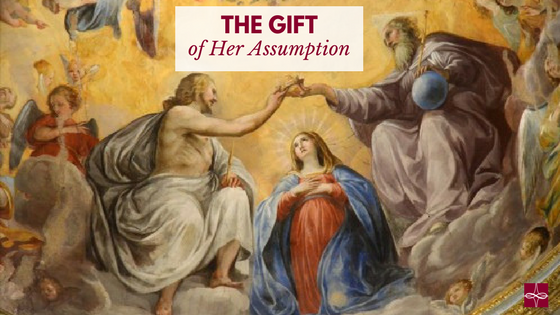
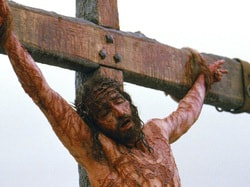
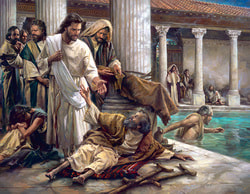
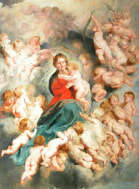
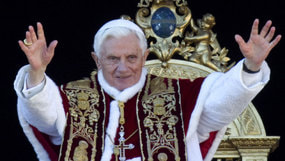

 RSS Feed
RSS Feed